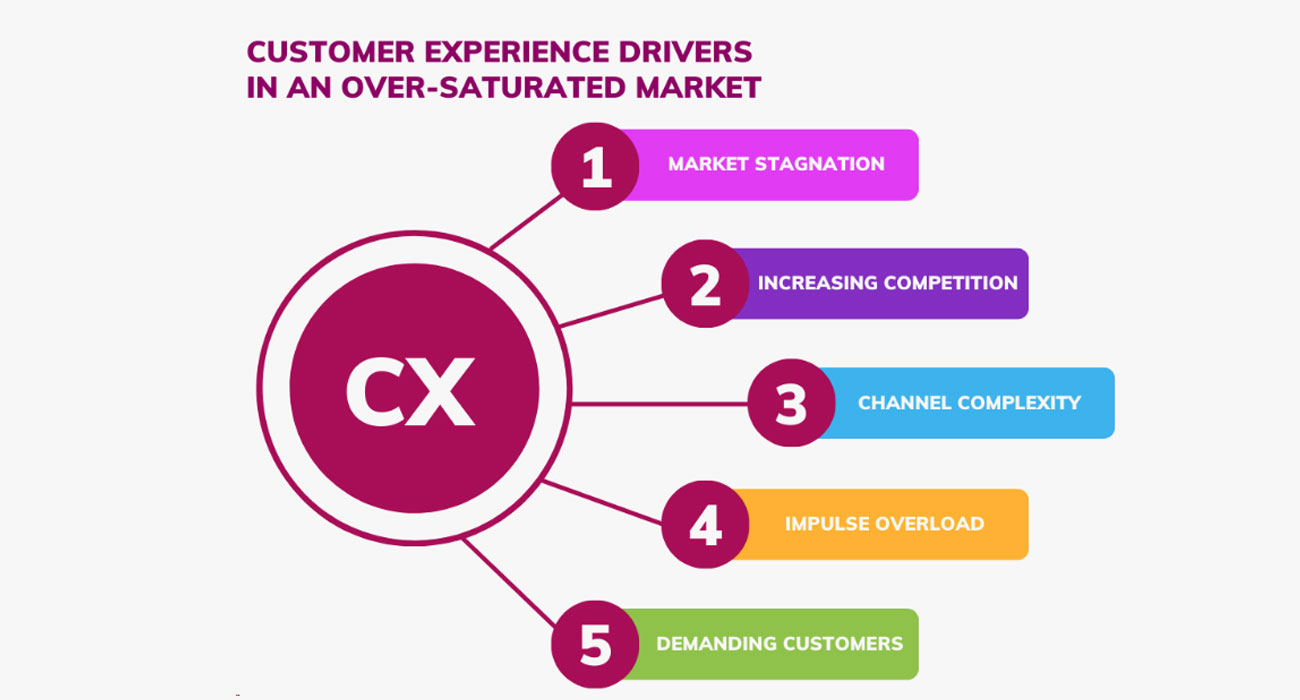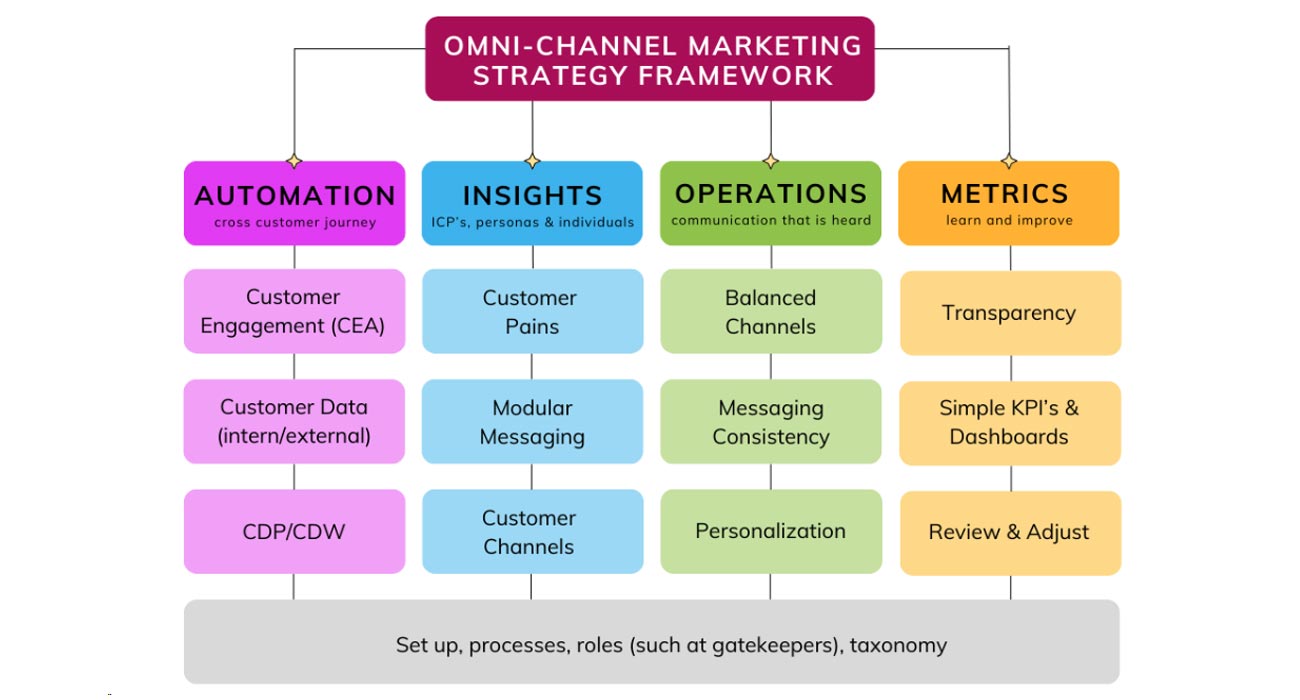Can multichannel marketing strategies still effectively penetrate the increasingly over-saturated market, or do they risk diluting marketing efforts and wasting precious resources?
Do you recognise this: you search and click on various platforms, and suddenly you find the exact offer you are looking for. You click through to the seller and get an even better offer-you-can’t-refuse. When you try to remember where you first saw it, you can’t: was it a search engine hit, a social media ad, or something else? It feels like someone has been able to read your mind. That’s multichannel marketing at its best.
But often things work differently: you get irrelevant ads, not just one but many, or you can’t trace back that one interesting offer or promotion. And instantly you receive one or more newsletters that you never subscribed to. They often are barely distinguishable from spam and bring irrelevant content that just irritates. That is failing multichannel marketing.
In a market that is increasingly over-saturated, the latter trend seems to get worse. This article aims to explore the complexities and challenges of implementing multichannel marketing in a highly competitive environment and provides some direction on how to deal with them. 
Main Multichannel Marketing Challenges for Businesses
With people spending on average between 6 and 7 hours daily online and with many screen-centred jobs, an individual person is exposed to tens of thousands of digital impulses each day. With geopolitical events fuelling inflation and growth stagnation, today’s digital landscape has become hyper-competitive. Can multichannel marketing strategies still effectively penetrate the increasingly over-saturated market, or do they risk diluting marketing efforts and wasting precious resources?
As the number of channels and offerings is continuously increasing, another challenge is to master this ever-growing complexity. Note that ‘channels’ does not just refer to categories such as ‘Social Media’, ‘websites’, etc., but to each channel within these categories. For example, ‘Social Media’ includes LinkedIn, Xing, Reddit, Quora, X (formerly Twitter), Facebook, Instagram, TikTok, etc. as separate channels, each with its own unique audience, content format, and engagement style.
As Neil Patel summarises it, companies cannot build a business through one channel anymore. The reason is simple: omnichannel marketing reduces CPA (cost-per-acquisition) with roughly 9-11% and customers hop channels frequently. When making go-to-market decisions, companies need to add target audience channels to product-market combinations. Which ones do the different target audiences use? What investment levels in marketing and sales automation, and in content creation do they require? What is the anticipated CPA and ROI of different omnichannel-mixes and scenarios?
From Multichannel Marketing to Omnichannel Marketing for Better Customer Experience
Let’s first look at the three critical concepts in the context of our topic.
- Customer Experience (CX): The complexity of emotional and rational perceptions that a customer forms through interactions with a company across its array of touchpoints.
- Multichannel Marketing: Coordinating marketing efforts across different channels to reach and engage customers, starting with the business perspective.
- Omnichannel Marketing: Orchestrating marketing efforts across all relevant channels to reach and engage customers, starting from the customer perspective, as a true customer-centric concept.
To maximise CLV (Customer Lifetime Value), businesses need to connect to customers through all relevant channels and provide the best Customer Experience, while balancing the cost to ensure the maximal ROI (Return on investment).
Most of my clients support optimising multichannel marketing: they have a website, a YouTube account, a mailing tool, LinkedIn company and personal pages, podcast channels, blog channels, etc. They understand the benefit of integrating branding, content, and timing through these channels, ensuring the target audience receives more consistent and relevant messaging and information, and they seek help to implement this. Their approach however is still business-centric, as it limits marketing efforts to the channels that are already in place or some additional channels ‘that others use as well’.
Multichannel marketing leaves out answering the key question: Which channels do potential customers really use? This is the starting point of omnichannel marketing. Alongside understanding target audiences’ pains, companies also need to understand their channels, and start using them. This requires organisations to reserve sufficient budget for market and customer research to define their Ideal Customer Profiles (ICP’s), marketing personas and messaging building blocks.
It also requires them to invest into Customer Engagement Automation (CEA) to integrate the insights into their marketing, sales and service decision-making and execution engines. While ICPs and persona research and automation are of strategic importance, individual customer and target person profiles may differ and should be taken into account as well.
Omnichannel Marketing Operational Objectives to Maximise Customer Experience
Once you have secured a good understanding of your target audiences, marketing execution brings the next level of challenges to be addressed: to produce communication that is heard. There are three operational strategic objectives that makes sure you are organised and prepared:
Avoid Channel Overload – Too much content clouds the messaging and could cause negative impact to persons in your target audience. It may lead to decision paralysis, stall cognitive abilities, cause distrust in and blindness for marketing messages and make customers more selective about their channels. It also makes marketing attribution more difficult and channel-level KPI-measurement more complex, which reduces confidence in marketing ROI.
Deliver Consistent Messaging – Keeping the quality, quantity and timing of your marketing content and communication consistent avoids customer confusion. It strengthens your messaging and it helps build credibility, brand trust and reputation. Steps to establish and preserve this consistency include assigning someone in your marketing team as consistency gatekeeper, establishing a taxonomy and using modular texts that can be applied on any medium. Here Generative AI can be of great assistance.
Ensure Personalisation – In essence any business or consumer transaction is about building a trust-relationship. To secure that, a buyer wants to be respected, valued and understood. Customers ask for relevant, valuable information that they don’t have, for reminders of things they want to know, at the moments that they need it or are ready for it, on any channel they interact with a company. Leveraging predictive and generative AI will help you to achieve better and faster personalisation of your marketing assets.

A Strategic Framework for Effective Omnichannel Marketing Implementation
Omnichannel marketing as the evolution of multichannel marketing is a key discipline for demand generation to succeed in an over-saturated market. As this is of crucial importance, a marketing strategy should create the conditions and provide enablement to execute it. This means upfront decisions by company and marketing leadership on the priorities, the investments, the implementation path and the KPIs. Omnichannel marketing can be effective in an over-saturated market, but only when executed strategically. Summarised into a framework this looks as follows:
- Automation: Invest in Customer Engagement technology cross customer journey (MarTech + SalesTech + ServiceTech) to enable a seamless Customer Experience across the full Customer Experience and Lifetime. Prioritise a fully connected Customer Data Platform (CDP) and Cloud Data Warehouse (CDW) to provide customer insights and record their behaviour.
- Insights: Invest in customer data that for each ICP and persona identifies pains, needs, channels, and messaging that lands. Don’t stop there: conduct individual decision maker research and master personalisation. Use external and internal sources and apply Predictive AI.
- Operations: Establish an operational set up and processes that enable utilisation of a., b., and d., while fulfilling the three operational strategic objectives discussed above.
- Metrics: Be clear and transparent while leveraging your whole organisation, have simple KPI’s and relevant dashboards for all. Establish a company-wide-process to share and enrich customer insights, to design and execute fitting messaging, to communicate performance and to adjust over time.
As markets continue to saturate, the winners will be those who adopt a customer-centric approach to multichannel marketing. By understanding their audience deeply, crafting cohesive messages, and delivering personalised experiences across carefully chosen channels, businesses can cut through the noise and achieve meaningful connections with their customers. In the end, it is not about being everywhere, but about being in the right places with the right message at the right time.
















 Amplitude is a product analytics platform, enabling businesses to track visitors with the help of collaborative analytics. The platform leverages the capabilities of
Amplitude is a product analytics platform, enabling businesses to track visitors with the help of collaborative analytics. The platform leverages the capabilities of 




 Zoho Social, a part of Zoho’s suite of 50+ products, is a comprehensive social media management platform for businesses and agencies. The Zoho Social dashboard includes a robust set of features, such as Publishing Calendar, Bulk Scheduler, and Approval Management to offer businesses all the essential social media publishing tools. Its monitoring tools help enterprises track and respond to relevant social conversations.
Zoho Social, a part of Zoho’s suite of 50+ products, is a comprehensive social media management platform for businesses and agencies. The Zoho Social dashboard includes a robust set of features, such as Publishing Calendar, Bulk Scheduler, and Approval Management to offer businesses all the essential social media publishing tools. Its monitoring tools help enterprises track and respond to relevant social conversations.

 Microsoft Dynamics 365 represents a robust cloud-based CRM solution with features such as pipeline assessment, relationship analytics, and conversational intelligence. It utilises AI-powered insights to provide actionable intelligence via predictive analytics, lead scoring, sentiment analysis, etc. Currently, Microsoft operates in 190 countries and is made up of more than 220,000 employees worldwide.
Microsoft Dynamics 365 represents a robust cloud-based CRM solution with features such as pipeline assessment, relationship analytics, and conversational intelligence. It utilises AI-powered insights to provide actionable intelligence via predictive analytics, lead scoring, sentiment analysis, etc. Currently, Microsoft operates in 190 countries and is made up of more than 220,000 employees worldwide.

 HubSpot is an inbound marketing, sales, and customer service software provider, offering robust CRM and automation solutions. Some of its products include Marketing Hub, Sales Hub, Operations Hub, Content Hub, Commerce Hub, Marketing Analytics and Dashboard Software. Guided by its inbound methodology, HubSpot enables companies to prioritise innovation and customer success.
HubSpot is an inbound marketing, sales, and customer service software provider, offering robust CRM and automation solutions. Some of its products include Marketing Hub, Sales Hub, Operations Hub, Content Hub, Commerce Hub, Marketing Analytics and Dashboard Software. Guided by its inbound methodology, HubSpot enables companies to prioritise innovation and customer success.
 Monday.com is a project management software company, offering a cloud-based platform that enables businesses
Monday.com is a project management software company, offering a cloud-based platform that enables businesses  Headquartered in San Mateo, California, Freshworks is a global AI-powered business software provider. Its tech stack includes a scalable and comprehensive suite for IT, customer support, sales, and marketing teams, ensuring value for immediate business impact. Its product portfolio includes Customer Service Suite, Freshdesk, Freshchat, Freshcaller, Freshsuccess, and Freshservice. Freshservice for Business Teams has helped several global organisations to enhance their operational efficiency.
Headquartered in San Mateo, California, Freshworks is a global AI-powered business software provider. Its tech stack includes a scalable and comprehensive suite for IT, customer support, sales, and marketing teams, ensuring value for immediate business impact. Its product portfolio includes Customer Service Suite, Freshdesk, Freshchat, Freshcaller, Freshsuccess, and Freshservice. Freshservice for Business Teams has helped several global organisations to enhance their operational efficiency.
 Talkdesk offers an innovative AI-powered customer-centric tech stack to its global partners. The company provides generative AI integrations, delivering industry-specific solutions to its customers. Talkdesk CX Cloud and Industry Experience Clouds utilise modern machine learning and language models to enhance contact centre efficiency and client satisfaction.
Talkdesk offers an innovative AI-powered customer-centric tech stack to its global partners. The company provides generative AI integrations, delivering industry-specific solutions to its customers. Talkdesk CX Cloud and Industry Experience Clouds utilise modern machine learning and language models to enhance contact centre efficiency and client satisfaction.




 The company offers comprehensive cloud-based solutions, such as Microsoft Dynamics 365, Gaming Consoles, Microsoft Advertising, Copilot, among other things, to help organisations offer enhanced CX and ROI. Its generative-AI-powered speech and voice recognition solutions,such as Cortana and Azure Speech Services empowers developers to build intelligent applications.
The company offers comprehensive cloud-based solutions, such as Microsoft Dynamics 365, Gaming Consoles, Microsoft Advertising, Copilot, among other things, to help organisations offer enhanced CX and ROI. Its generative-AI-powered speech and voice recognition solutions,such as Cortana and Azure Speech Services empowers developers to build intelligent applications. IBM is a global hybrid cloud and AI-powered
IBM is a global hybrid cloud and AI-powered  Uniphore is an enterprise-class, AI-native company that was incubated in 2008. Its enterprise-class multimodal AI and data platform unifies all elements of voice, video, text and data by leveraging Generative AI, Knowledge AI, Emotion AI and workflow automation. Some of its products include U-Self Serve, U-Assist, U-Capture, and U-Analyze. Its Q for Sale is a conversational intelligence software that guides revenue teams with AI-powered insights, offering clarity on how to effectively keep prospects engaged.
Uniphore is an enterprise-class, AI-native company that was incubated in 2008. Its enterprise-class multimodal AI and data platform unifies all elements of voice, video, text and data by leveraging Generative AI, Knowledge AI, Emotion AI and workflow automation. Some of its products include U-Self Serve, U-Assist, U-Capture, and U-Analyze. Its Q for Sale is a conversational intelligence software that guides revenue teams with AI-powered insights, offering clarity on how to effectively keep prospects engaged. Google Cloud accelerates every organisation’s ability to digitally transform its business. Its enterprise-grade solutions leverage modern technology to solve the most criticial business problems
Google Cloud accelerates every organisation’s ability to digitally transform its business. Its enterprise-grade solutions leverage modern technology to solve the most criticial business problems  8×8 offers out-of-the-box contact centre solutions, assisting all-size businesses to efficiently meet customer needs and preferences. It offers custom CRM integrations support and integrates effortlessly with third-party CRMs like Salesforce, Microsoft Dynamics, Zendesk, and more. Offering global support in all time zones & development teams in 5 continents, its patented geo-routing solution ensures consistent voice quality.
8×8 offers out-of-the-box contact centre solutions, assisting all-size businesses to efficiently meet customer needs and preferences. It offers custom CRM integrations support and integrates effortlessly with third-party CRMs like Salesforce, Microsoft Dynamics, Zendesk, and more. Offering global support in all time zones & development teams in 5 continents, its patented geo-routing solution ensures consistent voice quality. Sprinklr is a comprehensive enterprise software company for all customer-focused functions. With advanced AI, Sprinklr’s unified customer experience management (Unified-CXM) platform lets organisations offer human experiences to every customer, every time, across any modern channel.
Sprinklr is a comprehensive enterprise software company for all customer-focused functions. With advanced AI, Sprinklr’s unified customer experience management (Unified-CXM) platform lets organisations offer human experiences to every customer, every time, across any modern channel.


 Upland offers a comprehensive suite of contact centre and customer service solutions with products including InGenius, Panviva, Rant & Rave, and RightAnswers. InGenius enables organisations to connect their existing phone system with CRM, further enhancing agent productivity. Panviva provides compliant and omnichannel capabilities for highly regulated industries. Whereas, Rant & Rave, and RightAnswers are its AI-powered solutions,
Upland offers a comprehensive suite of contact centre and customer service solutions with products including InGenius, Panviva, Rant & Rave, and RightAnswers. InGenius enables organisations to connect their existing phone system with CRM, further enhancing agent productivity. Panviva provides compliant and omnichannel capabilities for highly regulated industries. Whereas, Rant & Rave, and RightAnswers are its AI-powered solutions, 


 Hootsuite, headquartered in Vancouver, is a social media management platform that streamlines the process of managing multiple social media accounts. Some of its core offerings include social media content planning and publishing, audience engagement tools, analytics and social advertising. Its easy-to-integrate capabilities help marketing teams to schedule and publish social media posts efficiently.
Hootsuite, headquartered in Vancouver, is a social media management platform that streamlines the process of managing multiple social media accounts. Some of its core offerings include social media content planning and publishing, audience engagement tools, analytics and social advertising. Its easy-to-integrate capabilities help marketing teams to schedule and publish social media posts efficiently.

 Brandwatch enables businesses to build and scale the optimal strategy for their clients with intuitive, use-case-focused tools that are easy and quick to master. Bringing together consumer intelligence and social media management, the company helps its users react to the trends that matter, collaborate on data-driven content, shield the brand from threats and manage all the social media channels at scale.
Brandwatch enables businesses to build and scale the optimal strategy for their clients with intuitive, use-case-focused tools that are easy and quick to master. Bringing together consumer intelligence and social media management, the company helps its users react to the trends that matter, collaborate on data-driven content, shield the brand from threats and manage all the social media channels at scale.


 Adobe Experience Cloud offers a comprehensive set of applications, capabilities, and services specifically designed to address day-to-day requirement for personalised customer experiences at scale. Its platform helps play an essential role in managing different digital content or assets to improve customer happiness. Its easy-to-optimise content gives users appropriate marketing streams, ensuring product awareness.
Adobe Experience Cloud offers a comprehensive set of applications, capabilities, and services specifically designed to address day-to-day requirement for personalised customer experiences at scale. Its platform helps play an essential role in managing different digital content or assets to improve customer happiness. Its easy-to-optimise content gives users appropriate marketing streams, ensuring product awareness. Salesforce-owned Tableau is an AI-powered analytics and business intelligence platform, offering the breadth and depth of capabilities that serve the requirements of global enterprises in a seamless, integrated experience. Marketers can utilise generative AI models, AI-powered predictions, natural language querying, and recommendationsons.
Salesforce-owned Tableau is an AI-powered analytics and business intelligence platform, offering the breadth and depth of capabilities that serve the requirements of global enterprises in a seamless, integrated experience. Marketers can utilise generative AI models, AI-powered predictions, natural language querying, and recommendationsons. Contentsquare is a cloud-based digital experience analytics platform, helping brands track billions of digital interactions, and turn those digital
Contentsquare is a cloud-based digital experience analytics platform, helping brands track billions of digital interactions, and turn those digital 


 Zoho Corporation offers innovative and tailored software to help leaders grow their business. Zoho’s 55+ products aid sales and marketing, support and collaboration, finance, and recruitment requirements. Its customer analytics capabilities come with a conversational feature, Ask Zia. It enables users to ask questions and get insights in the form of reports and widgets in real-time.
Zoho Corporation offers innovative and tailored software to help leaders grow their business. Zoho’s 55+ products aid sales and marketing, support and collaboration, finance, and recruitment requirements. Its customer analytics capabilities come with a conversational feature, Ask Zia. It enables users to ask questions and get insights in the form of reports and widgets in real-time. Fullstory is a behavioural data platform, helping C-suite leaders make informed decisions by injecting digital behavioural data into its analytics stack. Its patented technology uncovers the power of quality behavioural data at scale, transforming every digital visit into actionable insights. Enterprises can increase funnel conversion and identify their highest-value customers effortlessly.
Fullstory is a behavioural data platform, helping C-suite leaders make informed decisions by injecting digital behavioural data into its analytics stack. Its patented technology uncovers the power of quality behavioural data at scale, transforming every digital visit into actionable insights. Enterprises can increase funnel conversion and identify their highest-value customers effortlessly.

 Started in 2005 in a Sweden-based small town, Norrköping, Voyado offers a customer experience cloud platform that includes a customer loyalty management system. This platform helps businesses design and implement customer loyalty programs, track customer
Started in 2005 in a Sweden-based small town, Norrköping, Voyado offers a customer experience cloud platform that includes a customer loyalty management system. This platform helps businesses design and implement customer loyalty programs, track customer 



 TapMango provides a comprehensive, customisable, flexible and feature-rich customer loyalty program. The loyalty tools include an integrated suite of customised consumer-facing technology, easy-to-use merchant tools, and automation algorithms, all aimed at enhancing customer experience. Adaptable to any industry, TapMango’s platform helps merchants compete with larger chains, converting customer one-time purchases into profitable spending habits.
TapMango provides a comprehensive, customisable, flexible and feature-rich customer loyalty program. The loyalty tools include an integrated suite of customised consumer-facing technology, easy-to-use merchant tools, and automation algorithms, all aimed at enhancing customer experience. Adaptable to any industry, TapMango’s platform helps merchants compete with larger chains, converting customer one-time purchases into profitable spending habits.






 Adobe Experience Cloud offers a comprehensive set of applications, capabilities, and services specifically designed to address day-to-day requirements for personalised customer experiences at scale. Its innovative platform has played an essential role in managing different digital content or assets, to improve customer happiness or satisfaction. Some of its products include Adobe Gen Studio, Experience Manager Sites, Real-time CDP, and Marketo Engage.
Adobe Experience Cloud offers a comprehensive set of applications, capabilities, and services specifically designed to address day-to-day requirements for personalised customer experiences at scale. Its innovative platform has played an essential role in managing different digital content or assets, to improve customer happiness or satisfaction. Some of its products include Adobe Gen Studio, Experience Manager Sites, Real-time CDP, and Marketo Engage.

